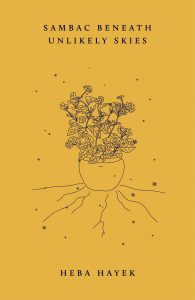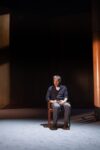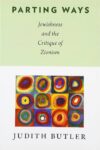
[Hajar Press; 2021]
Sambac Beneath Unlikely Skies is about finding and making love and life through and within impossibility: the impossibility of ending, the impossibility of beginning, the impossibility of going on, the impossibility of not going on, and more. Does Heba Hayek, the Palestinian poet born in Gaza, educated in the US and UK, and currently living in London contradict herself? “Very well then I contradict myself, /(I am large, I contain multitudes” Walt Whitman had written in response to this question. “Very well then . . . ” we can also imagine Heba Hayek responding, but through validating the specificity of circumstance, this hypothetical response would transcend mere repetition. For what Hayek accomplishes with her debut collection is to transcribe the crisis of categorization that defines the Palestinian experience. This is, paradoxically, precisely what cinches the relatability of the Palestinian liberation struggle. In her “Author’s Note,” Hayek writes about how the collection came to be:
Along the way, I started learning about the unique and individual experiences of these Gazan women. I learned that our story wasn’t as linear as one might think, and that it was filled with contradictions and differences even within the magnitude of our collective experience. I came to understand that, even while we had shared a war and a society and many losses, our interpretations and individual encounters were far from identical.
Reading these words, I couldn’t help but feel that I was being simultaneously reminded and shown anew why Palestinian writers such as Mahmoud Darwish and Edward Said were so drawn to liminal states of being and modes of expression. Though it was all ultimately connected in the attempt to elucidate the socio-political particularities of a colonized condition, such an approach was distinct from the realistic, revolutionary nationalist writings of Ghassan Kanafani. While Said would plumb the generative potentialities of the exilic condition (including its socio-political ramifications,) Darwish would experiment dynamically with the possibilities of forging meaning through lexical contradictions, giving his books titles such as In the Presence of Absence, Memory for Forgetfulness, and A River Dies of Thirst. Inhabiting and invoking contradiction becomes a powerful symbolic and artistic mechanism for coming to terms with the social, psychic, and political depths of settler-colonial oppression that is ruthless in its inversion of the familiar, of the commonplace. And our individual lives as a colonized people are not completely denuded of their unique features even as their collective character is catalyzed by the relentless brutality of the Zionist colonial project.
Of course, while it is true that familiarity coheres through a common difference, even across collective struggle, important distinctions must not be completely overwritten. Hayek’s descriptions of coming of age amidst Israeli military assaults as well as an inhuman blockade that continues to be imposed on the Gaza strip by the Israeli occupation regime, of struggling against misogyny and patriarchy in her childhood home as well as in exile, are not interchangeably familiar experiences shared by every Palestinian alike in exactly the same way. But it is, as Hayek reflects above, through the contradictions that individual stories of struggle assume their shareable value and strength, because it is through learning these contradictions that we can initiate the interminable process of coming to know the storyteller.
Sambac Beneath Unlikely Skies employs a non-linear timeframe in its narration. But textual fluidity is also performed in other ways. For instance, in a gesture that is brilliant in its deceptive simplicity, Hayek includes a “Playlist” as part of the collection; this playlist first appears on pages 5 and 6 of the text, but each song is then sequentially ascribed to the vignettes that follow. The impact is quasi-performative, given that each song could be Googled and/or played on Spotify as the reader works through the collection (indeed, Hajar Press’s page for Sambac Beneath Unlikely Skies includes a Spotify version of the playlist that the viewer can listen to while reading about the book.) The addition of the playlist evokes the act of traveling. It also simultaneously affirms and complements the singularity of the narrator’s experience, since even as readers may consider the importance of each song to the specific episode to which they are assigned in the text according to the narrator, we will undoubtedly come up with associations and interpretations of our own. The text is therefore both vulnerable and inviting in its hybrid approach to mixed media.
Identification can be a vexed issue for the Palestinian writer, for even when deploying the first-person singular, the question (whether implied or posed directly) is to what degree we write as ourselves and to what level the “personal” constitutes an allegorical trojan horse. For example, was Mahmoud Darwish simply writing about his mother in his famous poem, “To My Mother,” or was the “Mother” in the poem a metaphorical pean to Palestine as homeland? Even as Darwish maintained the literal interpretation, scores of readers were inspired by the national-figurative one. It is against this dilemma that I appreciate Hayek’s sophisticated undermining of the possibility of a static, fixed consciousness to which to tether the various reflections shared in the text. Even as we can plausibly assume that Hayek’s direct experiences formed the bulk of the material inspiring these pieces, Hayek does not write of herself, but “the narrator” in the author’s note:
As the narrator grows into unlikely circumstances away from Gaza, memory is her greenhouse; her way to bring back the voice of the girl who was sacrificed and born in the hands of her identity. At her desk in a flat in Southeast London, she writes of what makes her soul flicker: community love, especially the kind embodied by circles of women and girls.
Even when deploying “I,” then, it is clear that the identity of the speaker is conceived as a cluster of narratives brought to the fore of diegetic enunciation, a vision that displaces the masculinist construct of the heroic single-consciousness inscribing the surrounding world with its unique vision. Can the subaltern speak? Who is the most silenced, even — especially — among the silenced? To my mind, these are some of the complex questions by which Hayek’s narrative project assumes the necessity of its function.
And these considerations do not entirely overwrite more familiar associations we may have with different points-of-view as readers. For instance, in the piece “Chronology of a Girlhood in Gaza,” it is clear that the switch to second person is intended on some level to reflect the psychological dissociation that often accompanies traumatic episodes, as in the narrator’s description of being sexually assaulted by family members:
3. When you’re five, two men in your family will start touching you and your other cousins. You will resist at first, but they will tell you that it’s funny.
‘Look, this is your butt! Haha!’
A similar effect seems to be at work in the narrator’s retrospective declaration that “You will learn that even parents/can’t protect their children from war” during the Second Intifada. But even when relaying such harrowing episodes, the use of second person and tonal understatement implicate the reader in a wider communal convergence. The military violence of Zionist settler-colonial occupation and the interpersonal violence of patriarchy, misogyny, and sexual assault are pervasive, and need to be countered collectively. As such, we cannot look away from either, or separate the fight against one from the fight against the other, particularly given colonial Zionism’s entrenchment in Orientalist patriarchal and misogynist militarism. Social and political-national liberation are therefore one and the same, as proclaimed by members of activist organizations such as alQaws and Tal3at, which fight for the freedom of LGBTQ Palestinians and Palestinian women within and without the Palestinian homeland, and as documented by the authors of the recently-launched Palestinian Feminist Collective pledge. The use of the second person here enacts the ongoing literary de- and re-personalization Hayek performs throughout this work.
A developmental arc remains discernible even as the text realizes alternating and polyphonic modes of expression at various points. The growth of the narrator’s political awareness and commitment is an especially poignant trope through which we can trace this accumulative process. For instance, the first vignette, “Guns and Figs,” opens with an idyllic narrative of family trips to the beach. The piece luxuriates briefly in wistful, nostalgic imagery: “ . . . in Summer, time was like honey oozing from a bottle. It stretched, but quickly gathered and spread through our memories. Sticky and delicious.”
But the joy of this prelapsarian summertime ritual is robbed during the final instance of its repetition, when the narrator’s father is stopped at the Abu Holi checkpoint. At this moment, the narrator knows “Baba was political and that he had gone to prison for protests he’d coordinated and things he’d said or written. I also knew of the many times he’d been taken from the house, and part of me always feared that it would happen again.” What begins as a description of a carefree childhood ritual thus reveals the more insidious features of life under colonial rule, where no act or process, however intimate, however nominally “safe” or “secure,” is free from the abuses of the colonizer — in this case, the Zionist settler-colonial regime. In the case of the Palestinian liberation struggle, checkpoints in particular represent the bureaucratized routinization of quotidian colonial degradation, dehumanization, and humiliation. Palestinians can be turned back or denied passage for any reason; colonial checkpoints make the most mundane aspects of daily life, from going to work or visiting family, a practical impossibility. Palestinians have been denied medical attention and even killed at Israeli checkpoints.
Suffice it to say that this powerfully economic vignette is about far more than a trip to the beach that never materialized, just as the piece, “Did You Know?” simultaneously is and is not about a poetry reading that never came to be. “Did You Know?” begins by describing the eager anticipation of schoolchildren for the morning assembly in which they are about to participate. The assembly will feature “scouts hoisting the flag for the national anthem, followed by a light exercise, a beautifully recited Qur’an verse, Did You Know? fun facts, and a poem at the end. I was usually the poem girl.”
If the performers do well, we are told, they could finally win “the school broadcast badge.” But just as the Did You Know? portion of the assembly is about to begin, the principal interrupts the proceedings to announce that then-Israeli Prime Minister Ariel Sharon has stormed the Al-Aqsa mosque. This day that was so special to the narrator is in fact the start of the Second, or Al Aqsa Intifada (2000-2005.) The morning assembly is postponed for a morning prayer. The narrator reflects, “I stood there in my tiny self with my poem hanging from my pocket, entirely upset with Sharon. We would have to wait another week to win the badge.”
The haunting vignette “Freedom” explores, again via a childhood anecdote, the painful passage from joy to familiar despair as colonial subjugation’s dominion is in fact revealed to be intact. Following the withdrawal of Israeli settlements (really colonies) and settlers (colonizers) from the Gaza strip in 2005, the people of Gaza are initially jubilant. The narrator’s family are also swept up in the ecstasy, and decide to travel to Egypt together. The slippage from day to night and the replacement of childhood anticipation with fatigue from hours spent in traffic and sleep deprivation correspond to the deeper devastation of the eventual realization that, for all intents and purposes, Israel still wields an iron and unjust grip over the Gaza strip from land, sea and air. Direct physical presence is not a prerequisite to colonial oppression. Somberly the narrator concludes, “There was a time when my land was liberated. It lasted until I realized it wasn’t.”
The push and pull between the overwhelming and overdetermining nature of Zionist colonial oppression and the oft-troubled pursuit of “normal” concerns remains a tense dynamic throughout the work. “People like us aren’t supposed to have ‘normal’ problems” the narrator muses in “Crema,” reflecting on the unwitting dehumanization that assumptions about a superhuman capacity for tolerance can inflict upon oppressed peoples. This is the potential condescension enacted when praising individuals for “resilience.” But even here, the dialectical power of Hayek’s project prevents dichotomous oversimplification.
In the author’s note, Hayek concedes that “resilience,” which she associates with the sambac plant, “has been overused,” but insists that it “nonetheless is full of meaning and truth.” The sambac “appears in my narrator’s attempts to create life where this shrub doesn’t naturally thrive.” The sambac is akin to Hayek’s narrator, and to all Palestinian women who resist and make life, home, meaning, and art despite the ruthlessness of the Zionist colonial project. In the end, the power of the sambac as a symbol in Hayek’s hands is through its ability to teach us to trust in the unexpected. For all of the corpses and architectural skeletons of Palestinian people and homes felled by Israeli settler-colonialism, its victory is not a given. We will continue to resist, and to fight for return. And if this seems a fantastical conclusion to the story of the Palestinian liberation struggle, we need only heed Hayek’s astute reminder that the sambac can grow beneath the unlikeliest of skies.
Omar Zahzah is a writer and activist who holds a PhD in Comparative Literature from the University of California, Los Angeles. Omar’s dissertation, “Undercover and Hyper-Visible: Security Poetics and Pacification Prosaics in African American and Arab American Literature,” analyzes the structures of signification that inform both literary representations of racialized policing and surveillance praxis among dissenting subjects as well as the quotidian logics and rationales driving state-sanctioned projects of repression and pacification.
This post may contain affiliate links.







